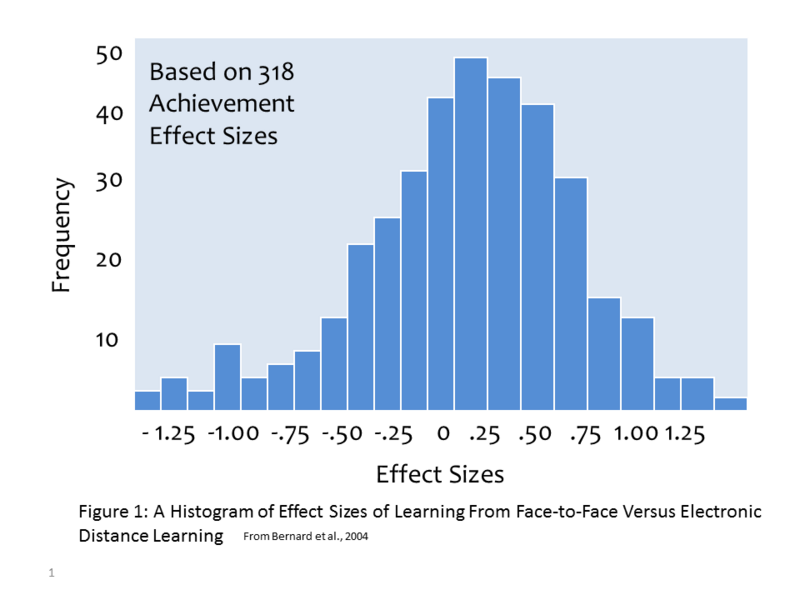ATD Blog
Blended Learning Is Better than Instructor-led or Online Learning Alone
Mon Jul 16 2012

Bookmark
Every time a new technology emerges, trainers wonder if learning would be more effective using that technology compared to traditional instructor-led training. In fact the first media comparison study was conducted in the 1940s by the US Army. They compared learning of a basic calibration procedure with lessons delivered by (1) a traditional instructor-led class, (2) a book, or (3) a film. All three lessons used basically the same words and visuals (except that the film and instructor presented an animated demonstration of the procedure). All participants were tested after completing their assigned lesson, and no significant differences in learning emerged. Because the key instructional methods (eg words and pictures) were basically the same, all three versions led to equivalent learning.
Is Electronic Distance Learning Better?
Fast forward 50 years. Naturally, the advent of computers gave rise to the same question: Is online learning better than instructor-led? The accumulation of many research studies that compared learning in an instructor-led class to some form of electronic distance learning was the basis for a 2004 meta-analysis report from Bernard and colleagues. The team prepared the histogram of effect sizes shown below based on 318 different media comparison research studies.

An effect size of 0 means there was no difference in achievement between the instructor-led and the digital versions. An effect size over .5 means that one delivery mode was considerably more effective, and an effect size of .7 or more indicates quite a large advantage. As you can see from the histogram data, the majority of effect sizes were quite small, meaning that just as in the Army research, learning was equally effective from instructor-led and digital versions. However, we do see that in some cases, the instructor-led version was more effective than the digital version and vice-versa. No doubt in some experiments, the lessons were not equivalent. We have all attended poorly designed classroom sessions as well as e-learning courses that failed to use features of the technology that would best support learning. From these many experiments we have learned that it is not the technology per se that causes learning, but rather how that technology is used to support basic learning processes. A lengthy lecture without graphics or participant interaction is equally ineffective in a classroom or online.
Online Versus Face-to-Face Versus Blends
In 2010 the U.S. Department of Education reported an updated meta-analysis because technology had evolved considerably since 2004. You can access the full report here.
The report summarizes experimental comparisons of learning among pure face-to-face instructor-led training, pure Internet-based online learning, and blends of both. The study concludes that, “In recent experimental and quasi-experimental studies contrasting blends of online and face-to-face instruction with conventional face-to-face classes, blended instruction has been more effective. When used by itself, online learning appears to be as effective as conventional classroom instruction, but not more so” (p. xviii).
Why Are Blends Better?
The main advantage of blended learning is the opportunity for instructors to make use of the features unique to each delivery environment that optimize learning. For example, in a class for new supervisors on hiring interviews, learners first complete an interactive online self-study self-paced lesson that presents guidelines and examples for constructing job-relevant and legal questions. A follow-on face-to-face class uses social presence by emphasizing role-play exercises on conducting the interviews and evaluating interviewee responses. In other words, using media blends lets you exploit the unique benefits of each.
You probably have useful examples of effective ways you have used self-study online environments in combination with face-to-face training. Please comment with your own examples and lessons learned.
References
Bernard, et al (2004). How does distance education compare with classroom instruction? A meta-analysis of the empirical literature. Review of Educational Research 74, 379-439.
U.S. Department of Education, Office of Planning, Evaluation, and Policy Development, Evaluation of evidence-based practices in online Learning: A Meta-analysis and review of online learning studies, Washington, D.C., 2010.

